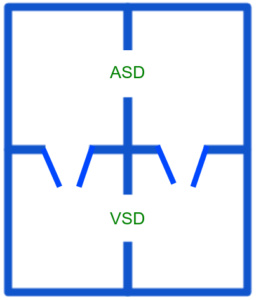Congenital heart disease – Birth defects of the heart

What is congenital heart disease?
Congenital heart disease is heart disease present from birth. But it need not manifest at birth and may even be detected decades later as some are asymptomatic. Severe forms of congenital heart disease may start manifesting soon after birth and may sometimes be fatal in early life.
What are the common manifestations of congenital heart disease?
Congenital heart disease can manifest with breathlessness, bluish discoloration (blue baby), head sweating, failure to grow well (failure to thrive) or undue movements or prominence of the chest. Very often there are no symptoms and congenital heart disease is detected as a cardiac murmur on routine pediatric checkup.
What are the common congenital heart diseases?
Congenital heart disease can be broadly divided into those with bluish discoloration (cyanosis – cyanotic congenital heart disease) and those without bluish discoloration (acyanotic congenital heart disease). Important ones without bluish discoloration are the defects in the wall between the lower or upper chambers. Defect in the wall between upper chambers is called atrial septal defect (ASD) and the defect in the wall between lower chambers is called ventricular septal defect (VSD). Another common acyanotic congenital heart disease is patent ductus arteriosus, in which there is persistence of connection between the pulmonary artery and the aorta. Important cyanotic congenital heart diseases are tetralogy of Fallot (TOF) and transposition of great arteries. In the former there is combination of four defects and there is mixing of oxygenated and deoxygenated blood in the ventricles. In the latter, aorta arises from the right ventricle and pulmonary artery from left ventricle, causing admixture of oxygenated and deoxygenated blood.


